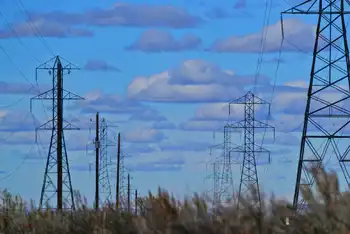New solar array goes on-line at BNY Mellon Complex
The system is one of the largest of its kind in greater Boston and among the top 25 solar-electric generating projects in the Commonwealth.
Building on BNY Mellon's commitment to environmental sustainability, the 5,762 sq ft array is a "direct tie" system that will offset the company's daily power consumption.
Electricity generated by the system's 364 solar modules flows directly into the building's power lines, effectively reducing power needs from the utility in direct proportion to system output. BNY Mellon estimates annual output to be around 103,000 kilowatt-hours, which is expected to generate cost savings of up to $15,000 a year.
103,000 kilowatt-hours of electricity is equivalent to the energy used to power 3,300 local homes for one day. That much electricity derived from non-polluting sources such as solar also prevents the release of key pollutants, specifically:
• 50 tons of carbon dioxide (CO2) — equivalent to the CO2 absorbed each year by 42 acres of forest. Carbon dioxide is the main gas responsible for climate change.
• 425 pounds of sulphur dioxide (SO2) — enough to fill more than 14,000 basketballs. Sulphur dioxide is the main cause of acid rain and visibility problems.
The project received funding from the Massachusetts Renewable Energy Trust and is part of National Grid's Everett Congestion Relief Pilot program, which includes solar power as one of several methods to limit peak demand for electricity. Installation of the system was coordinated by BNY Mellon's property manager in Everett, Jones Lang LaSalle.
"The Bank of New York Mellon has a long tradition of operating in ways that make sense both for the environment and our business," said Chip Logan, general services and corporate real estate division manager at BNY Mellon. "Together with our partners at Jones Lang LaSalle, Massachusetts Renewable Energy Trust and National Grid, this solar installation supports our corporate-wide commitment to sustainability while easing energy demand on the local grid."
"Projects like this are crucial stepping stones as the Commonwealth forges ahead toward the Patrick-Murray Administration's goal of 250 megawatts of installed solar power in Massachusetts by 2020," said Department of Energy Resources Commissioner Philip Giudice. "Through the Massachusetts Renewable Energy Trust, the Commonwealth is proud to partner with The Bank of New York Mellon and we congratulate the company on its clean energy leadership."
"We applaud The Bank of New York Mellon for its vision and leadership as a 'green' corporate citizen. Three years ago it made a bold commitment to this project and to the value of renewable energy, helping to mitigate the effects of climate change," said Tim Roughan, director, distributed resources for National Grid. "BNY Mellon's highly visible photovoltaic system is the largest renewable energy installation completed to date under our congestion relief pilot. We hope it will create excitement while serving as an example of what we at National Grid call the 'power of action' — many individuals making changes that collectively have a positive impact on our environment."
"Bank of New York Mellon recognizes that a sustainable, resource-efficient building meets the dual goals of being both economically and environmentally responsible," said Mike Cook, vice president and general manager for Jones Lang LaSalle in Everett. "Adding a solar powered electricity system is an innovative and financially sound investment to make a building more sustainable."
BNY Mellon received various tax incentives for its solar electric project, including state and federal tax credits. Combined, the incentives cover about two-thirds of the cost of the system, which will pay for itself in less than five years.
A direct-tie solar array is a popular and efficient choice, because there are no batteries to replace and it costs less than its battery-equipment counterpart. BNY Mellon's system essentially wakes up in the morning and shuts down at night.
Opened in 1999 after extensive renovations to a former Textron manufacturing plant, BNY Mellon's 385,000 sq ft office complex in Everett is home to more than 1,000 employees and an operations center for the company's securities servicing and payments processing businesses. The facility also has earned the EPA "Energy Star" award seven years running.
The Bank of New York Mellon has about 3,000 employees in greater Boston, most of them working in its locally headquartered securities servicing, asset management, and wealth management businesses.
Related News

Melting Glass Experiment Surprises Scientists by Defying a Law of Electricity
LONDON - A team of scientists working with electrical currents and silicate glass have been left gobsmacked after the glass appeared to defy a basic physical law.
If you pass an electrical current through a material, the way that current generates heat can be described by Joule's first law. It's been observed time and time again, with the temperature always evenly distributed when the material is homogeneous (or uniform).
But not in this recent experiment. A section - and only a section - of silicate glass became so hot that it melted, and even evaporated. Moreover, it did so at a much…




